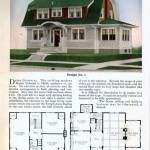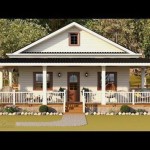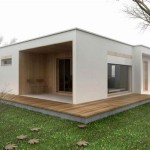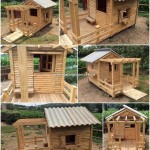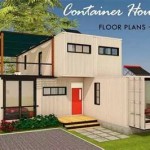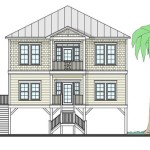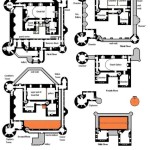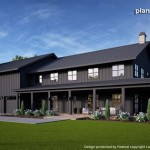House Plans With Breezeway To Guest: A Guide to Seamless Living
Architectural design continuously evolves, adapting to modern lifestyles and prioritizing both aesthetics and functionality. A compelling example of this evolution is the incorporation of breezeways in residential house plans, particularly in designs that include guest houses or separate living spaces. Breezeways not only provide a physical connection between two structures but also create a transitional space that enhances the overall living experience. This guide explores the advantages, design considerations, and various applications of house plans that feature a breezeway connecting the main house to a guest house, emphasizing the concept of seamless living.
A breezeway, traditionally described as a covered walkway open to the elements, has been reimagined as a versatile architectural element. In contemporary designs, it serves as more than just a connector; it becomes an extension of the living space, blurring the lines between the indoors and outdoors. When integrated into a house plan with a detached guest house, the breezeway provides a sheltered passage, protects against the elements, and establishes a cohesive architectural identity for the property. It significantly contributes to the feeling of seamless living by facilitating easy access between the main house and guest quarters without fully compromising privacy.
Key Advantages of House Plans with Breezeways
The integration of a breezeway into house plans that include a guest house offers several distinct advantages. These advantages range from functional improvements to enhanced aesthetic appeal and contribute to the overall value and livability of the property.
One significant benefit is the enhanced connection to the outdoors. The open design of the breezeway promotes natural ventilation and allows for the enjoyment of the surrounding landscape. This is particularly valuable in climates with mild temperatures, where homeowners can utilize the breezeway as an outdoor living space throughout much of the year. The cross-ventilation provided by the breezeway can also reduce the need for air conditioning, contributing to energy efficiency. Furthermore, it offers a shaded respite from direct sunlight, making it a comfortable place to relax and enjoy the fresh air.
Another crucial advantage is the enhanced privacy offered by the separation of the main house and the guest quarters. While the breezeway facilitates easy access, it also maintains a degree of independence between the two structures. Guests can enjoy their own private space without feeling intrusive, and homeowners can maintain their privacy when hosting visitors. This arrangement is particularly suitable for accommodating elderly relatives, adult children, or long-term guests who require their own living space but still desire close proximity to the main house. The breezeway acts as a buffer, ensuring that both parties have their own sense of autonomy.
From an aesthetic perspective, a well-designed breezeway can significantly enhance the overall appeal of the property. It creates a visual link between the two structures, unifying the architectural design. The breezeway can be customized to complement the architectural style of both the main house and the guest house, creating a cohesive and harmonious look. It can be designed with various materials, finishes, and landscaping elements to reflect the homeowner’s personal taste. Furthermore, the breezeway can serve as a focal point, adding visual interest and character to the property. Its design can incorporate elements such as pergolas, trellises, or decorative lighting to further enhance its aesthetic appeal.
Design Considerations for Breezeway Integration
When designing house plans with a breezeway to a guest house, several key considerations must be taken into account to ensure optimal functionality and aesthetic appeal. These considerations include the orientation of the breezeway, the choice of materials, and the incorporation of landscaping elements.
The orientation of the breezeway is crucial for maximizing its benefits. The direction of prevailing winds should be considered to ensure optimal natural ventilation. In warmer climates, it is beneficial to orient the breezeway to capture the prevailing winds, which can help to cool the space and reduce the need for air conditioning. In colder climates, it may be preferable to orient the breezeway in a way that minimizes exposure to cold winds. The orientation of the breezeway should also be considered in relation to the sun's path. Designing the breezeway to provide shade during the hottest part of the day can enhance its comfort and usability. The placement of the breezeway should also consider the views from both the main house and the guest house, ensuring that the space offers pleasant vistas of the surrounding landscape.
The choice of materials is another critical consideration. The materials used in the breezeway should complement the architectural style of both the main house and the guest house. They should also be durable and weather-resistant, capable of withstanding the elements. Common materials for breezeway construction include wood, stone, brick, and concrete. The choice of materials will depend on factors such as budget, aesthetic preferences, and the local climate. For example, in coastal areas, materials that are resistant to salt air and moisture are essential. The roofing material should also be carefully selected to ensure that the breezeway provides adequate protection from the elements. The flooring material should be slip-resistant and easy to clean, especially in areas that are prone to moisture.
Landscaping is an integral part of the breezeway design. Incorporating landscaping elements can enhance the aesthetic appeal of the space and create a more inviting atmosphere. Plants, flowers, and shrubs can soften the hard lines of the architecture and create a sense of connection to the natural environment. Climbing plants, such as vines or trellises, can be used to create a green wall effect, adding visual interest and providing shade. Potted plants can be used to add color and texture to the space. The landscaping should be designed to complement the architectural style of the breezeway and the surrounding landscape. It should also be low-maintenance and drought-tolerant, especially in areas with limited water resources. The landscaping can also be used to enhance privacy by creating a screen between the main house and the guest house.
Applications and Variations of Breezeway Designs
The application of breezeway designs in house plans with guest houses is diverse and adaptable to various architectural styles and site conditions. From simple covered walkways to elaborate outdoor living spaces, the breezeway can be tailored to meet the specific needs and preferences of the homeowner.
One common application is the simple, functional breezeway, which provides a basic covered connection between the main house and the guest house. This type of breezeway typically features a roof supported by columns or posts, providing protection from the elements. It may be enclosed on one or both sides with screens or lattice to provide additional protection from insects and the weather. The flooring may be simple concrete, pavers, or gravel. This type of breezeway is ideal for homeowners who prioritize functionality and cost-effectiveness. It provides a practical solution for connecting two structures without adding significant expense or complexity.
Another variation is the enhanced outdoor living space breezeway, which transforms the connecting space into an extension of the living area. In this design, the breezeway may feature an outdoor kitchen, a dining area, or a lounge area. It may be furnished with comfortable seating, a fireplace, or an outdoor television. The flooring may be upgraded to include features such as a stone patio or a wooden deck. The roofing may be designed to provide ample shade and protection from the elements. This type of breezeway is ideal for homeowners who enjoy outdoor entertaining and want to maximize their living space. It provides a seamless transition between the indoors and outdoors, creating a comfortable and inviting space for relaxation and socialization.
Furthermore, the breezeway can be adapted to incorporate specific architectural features, such as arches, columns, or decorative lighting. The design can be customized to reflect the architectural style of the main house and the guest house, creating a cohesive and harmonious look. For example, a Mediterranean-style house plan may feature a breezeway with arched openings, stucco walls, and terracotta tile flooring. A modern house plan may feature a breezeway with clean lines, glass walls, and minimalist lighting. The possibilities are endless, and the breezeway can be tailored to meet the unique aesthetic preferences of the homeowner. The integration of these architectural elements elevates the breezeway from a simple connector to a significant design feature, enhancing the overall character and value of the property.

Single Story House Plans With Breezeways To Guest Houses Blog Eplans Com

Single Story House Plans With Breezeways To Guest Houses Blog Eplans Com

Single Story House Plans With Breezeways To Guest Houses Blog Eplans Com

Single Story House Plans With Breezeways To Guest Houses Blog Eplans Com

Single Story House Plans With Breezeways To Guest Houses Blog Eplans Com

Barndominium Floor Plans With Breezeway 8 Creative Designs For Medium And Large Families

Single Story House Plans With Breezeways To Guest Houses Blog Eplans Com

Barndominium Floor Plans With Breezeway 8 Creative Designs For Medium And Large Families

Greybeard Breezeway House Plan Barndominium Org

Modern Farmhouse Duplex With Shared Breezeway And Front Rear Porches 4 Bed 1703 Sq Ft Units
Related Posts

